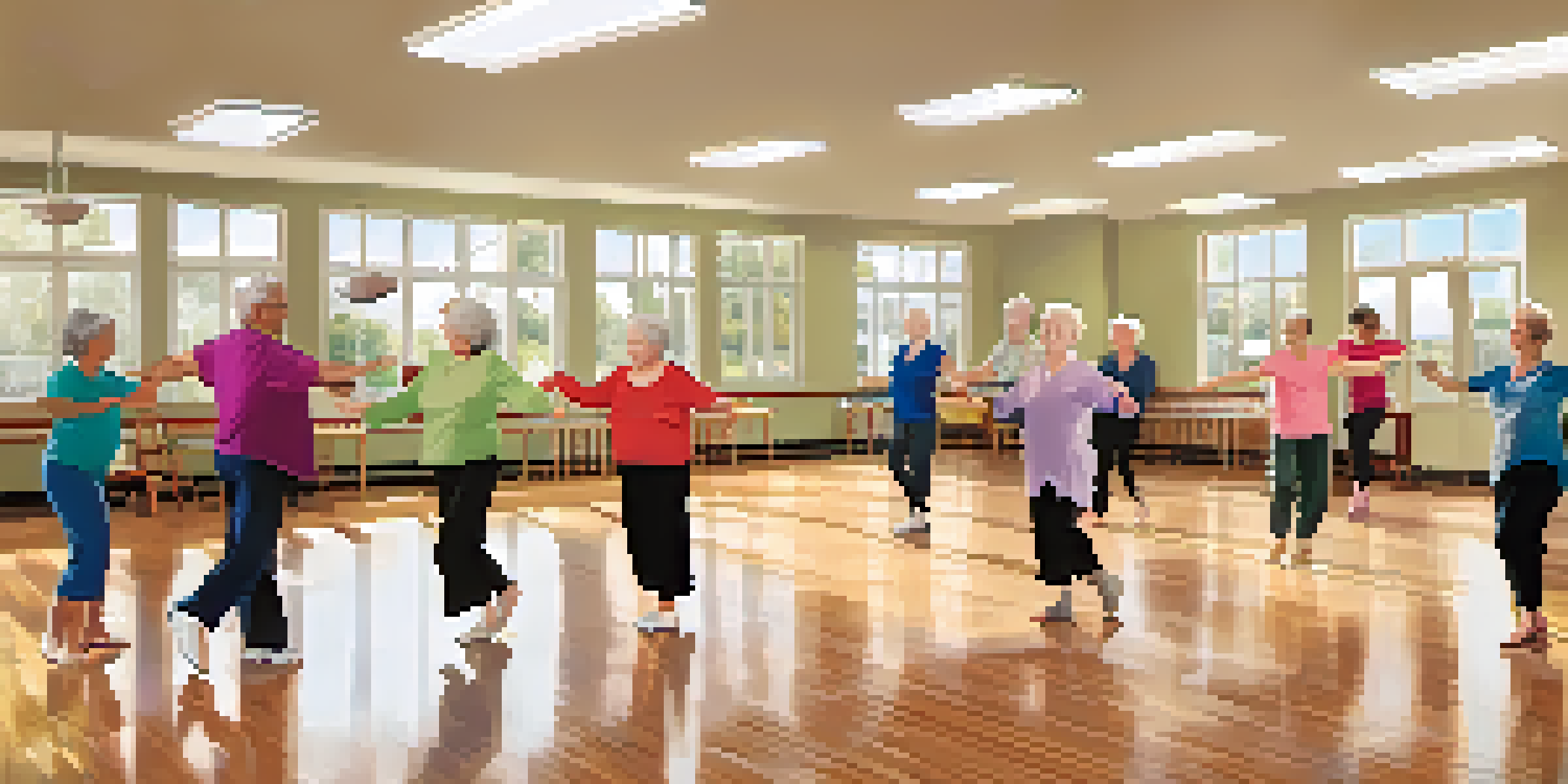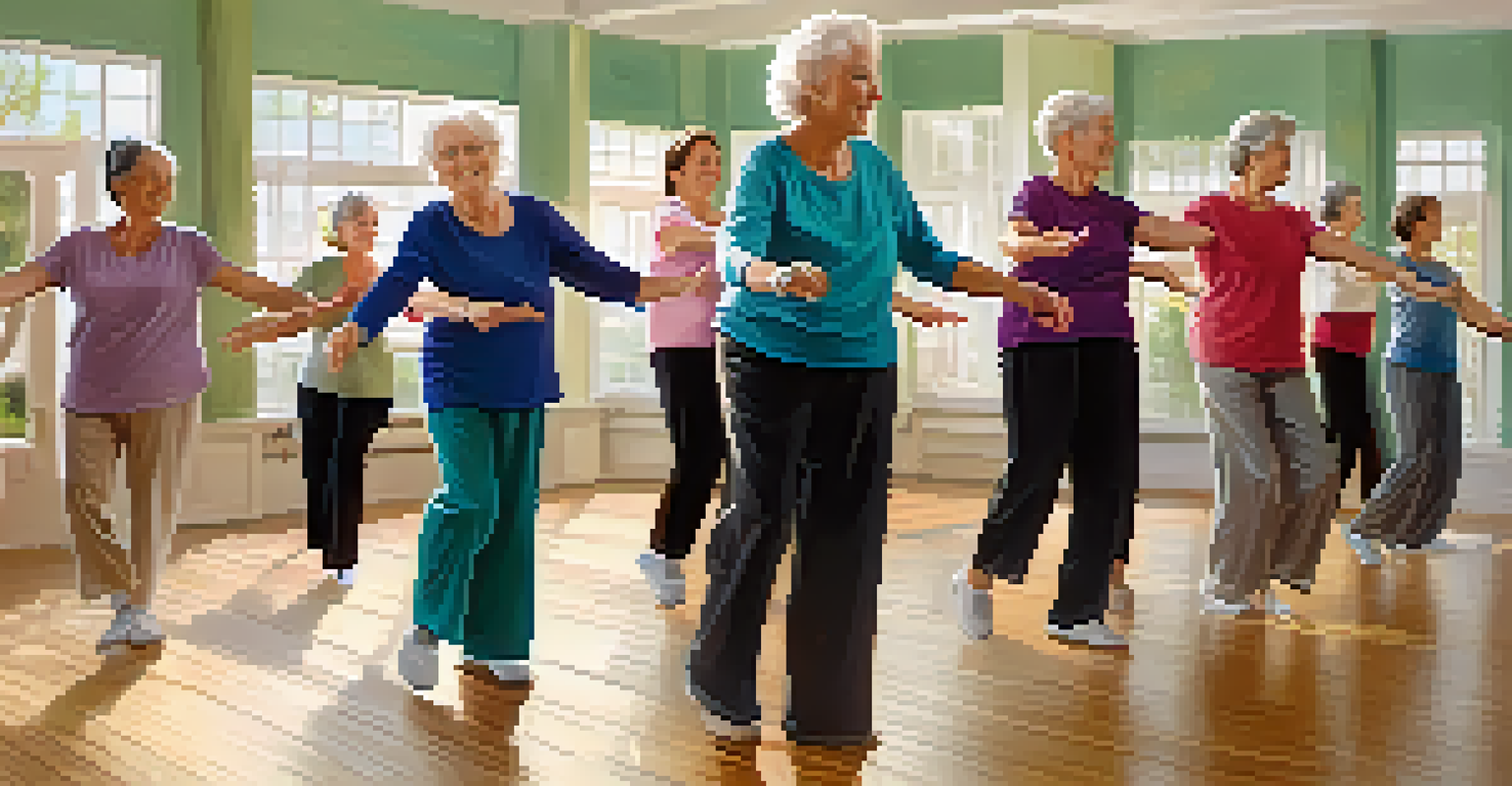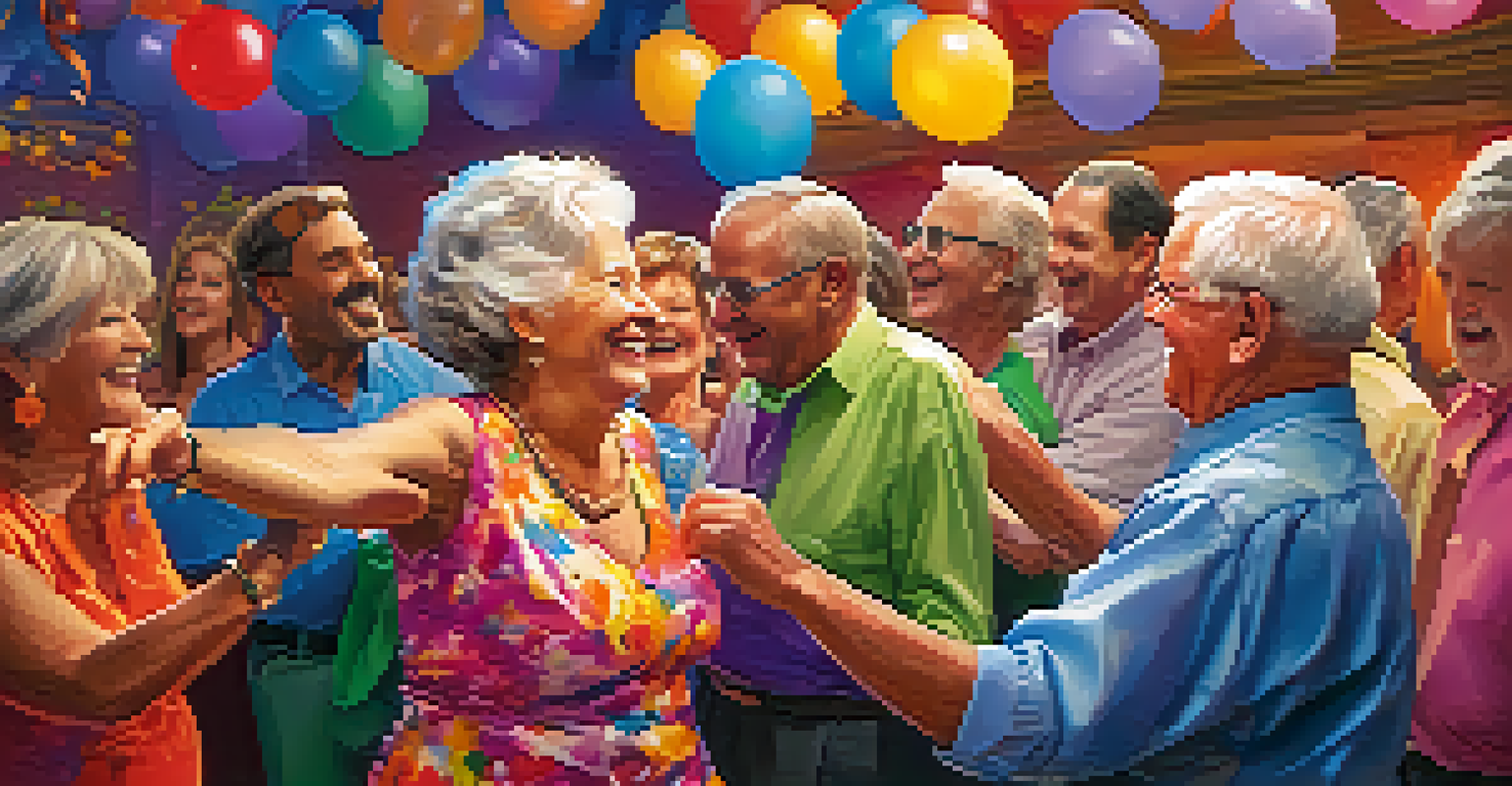The Impact of Dance on Fall Prevention for Older Adults

Understanding Fall Risks for Older Adults
Falls are a significant concern for older adults, often leading to serious injuries. Factors like decreased muscle strength, balance issues, and environmental hazards contribute to this risk. In fact, according to the Centers for Disease Control and Prevention (CDC), one in four seniors falls each year, highlighting the urgency of effective prevention strategies.
Dance is the hidden language of the soul.
The consequences of falls can be devastating, not only physically but also emotionally, leading to a fear of movement. This fear can create a vicious cycle where decreased activity further weakens strength and balance, increasing the likelihood of future falls. Therefore, it's crucial to explore proactive measures that can empower older adults to maintain their mobility.
One innovative approach to fall prevention is through dance, which combines physical activity with social engagement. By fostering a fun and supportive environment, dance may offer a unique solution to help older adults strengthen their balance and coordination.
The Benefits of Dance for Physical Health
Dance is not just an art form; it's a fantastic workout that engages multiple muscle groups. When older adults participate in dance, they improve their strength, flexibility, and endurance, all of which are essential for maintaining balance. For instance, styles like ballroom or line dancing require shifting weight and coordination, helping to reinforce these vital skills.

Furthermore, dance enhances cardiovascular health, which is crucial for overall fitness. With improved heart health, seniors can enjoy a more active lifestyle, reducing the risks associated with sedentary behavior. This holistic approach to physical health can be a game-changer in preventing falls.
Dance Boosts Physical Health
Engaging in dance improves strength, flexibility, and cardiovascular health, making it an effective way for older adults to reduce fall risks.
Moreover, engaging in dance can lead to better body awareness. As older adults become more in tune with their movements, they learn to navigate their surroundings with greater confidence, thereby minimizing fall risks in everyday situations.
Dance as a Tool for Improving Balance
Balance is a fundamental component in fall prevention, and dance offers a unique way to enhance this skill. Different dance forms, such as ballet or jazz, incorporate practices that focus on weight shifting and core stability, both of which are vital for maintaining equilibrium. As participants practice these movements, they gradually develop better balance.
The journey of a thousand miles begins with one step.
Research has shown that dance can significantly improve postural stability in older adults. For example, a study found that seniors who took dance classes demonstrated greater balance improvements compared to those who participated in traditional exercise programs. This indicates that the rhythmic and dynamic nature of dance can be particularly effective.
Additionally, dance promotes proprioception, the body's ability to sense its position in space. By engaging in dance regularly, seniors enhance their proprioceptive feedback, which is essential for preventing falls during unexpected movements or changes in terrain.
Social Connections Through Dance
Beyond the physical benefits, dance provides a wonderful opportunity for social interaction. Many dance classes for older adults are structured to foster community, allowing participants to build friendships and support networks. This social aspect can be highly motivating, encouraging seniors to stay active and engaged.
Social isolation is a common issue among older adults, leading to various health problems, including increased fall risks. By participating in dance, seniors can combat loneliness and create meaningful connections that enhance their overall well-being. A supportive environment can make all the difference in maintaining an active lifestyle.
Dance Enhances Balance Skills
Participating in various dance forms significantly improves balance and postural stability, which are crucial for preventing falls in seniors.
Moreover, shared experiences in dance classes can boost participants' confidence and self-esteem. When seniors feel valued and connected, they are more likely to engage in physical activities that promote balance and prevent falls.
Creating Safe Dance Environments for Seniors
While dance can be a wonderful tool for fall prevention, it's essential to ensure that the environment is safe and accessible for older adults. This includes providing adequate space for movement, ensuring flooring is non-slip, and offering chairs for support if needed. A well-designed space encourages seniors to participate without fear of injury.
Instructors should also be trained to recognize the unique needs of older adults, adapting routines to accommodate varying levels of mobility and fitness. By tailoring classes to the participants' abilities, instructors can help build confidence while minimizing the risk of falls during dance.
Incorporating warm-up and cool-down exercises into dance sessions is another important aspect of safety. These practices help prepare the body for movement and reduce the risk of strains or injuries, making the dance experience both safe and enjoyable.
Evidence Supporting Dance as a Fall Prevention Strategy
Numerous studies support the effectiveness of dance in promoting balance and reducing fall risks among older adults. Research has demonstrated that dance programs tailored for seniors lead to significant improvements in balance, gait, and overall physical health. These findings underscore the importance of integrating dance into fall prevention strategies.
For instance, a dance intervention study revealed that participants who engaged in dance had a lower incidence of falls compared to those who did not. This evidence highlights dance not only as a fun activity but also as a practical tool in enhancing safety and mobility for older adults.
Social Benefits of Dance
Dance classes provide an opportunity for social interaction, helping seniors combat isolation and build supportive communities that encourage active living.
As awareness grows about the benefits of dance, more communities are offering dedicated dance programs for seniors. This shift reflects a broader understanding of how enjoyable physical activity can lead to healthier, safer lifestyles.
Getting Started with Dance for Fall Prevention
For older adults interested in exploring dance as a form of fall prevention, starting is easier than you might think. Local community centers, senior centers, and dance studios often offer classes specifically designed for seniors. These classes provide a welcoming environment where participants can learn at their own pace.
It's important for seniors to choose a style of dance that resonates with them, whether it’s ballroom, salsa, or even Zumba Gold, which is tailored for older adults. Finding joy in the movement is key to maintaining long-term engagement and motivation.

Before starting any new physical activity, seniors should consult with their healthcare provider, especially if they have existing health concerns. This ensures that the chosen dance class aligns with their fitness level and health goals, paving the way for a positive and safe experience.